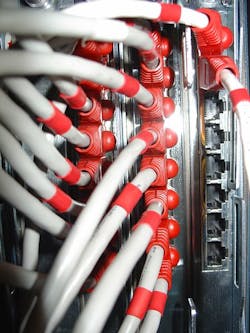Why non-standard length UTP offers a hidden opportunity for cabling contractors
By WECSO's Marketing Blog -- For contractors and integrators, today’s marketplace is hypercompetitive. Every day brings a challenge to get more out of less. Increasing job profitability is the way to stay truly competitive in an increasingly competitive marketplace.
What options exist to increase job profitability?
In the world of contracting, there aren’t many areas to cut costs that don’t negatively impact your quality of work. It’s possible to pay your people less while keeping your pricing unchanged to enhance job profits. However, that means using less qualified workers who might take more time to complete every job. A bigger risk is that you may end up with sub-par, low-quality work, which never ends well for you or your customer.
As labor costs are fairly constant, another option contractors have to increase profits is to pay less for datacom solutions or products while keeping pricing unchanged. Again, there are always options to get lower cost products (for example, purchasing offshore). Some of your competitors have chosen this route. However, many contractors have found that the quality and warranties that they and their customers count on just weren’t there. A partnership that lacks a strong relationship and long-term assurances runs the risk of becoming a lose-lose proposition.
When it comes down to it, decreasing labor costs and choosing low cost products both have inherent risks for contractors, integrators and their customers.
A Low-Risk Way to Increase Profitability
Buying non-standard length UTP cable is one way to significantly increase profits while still working with the same U.S.-based world-class manufacturers you currently buy from today. While the length isn’t standard, these UTP cable products come with the same warranties and packaging as the standard length UTP products you currently purchase. It’s one of the best ways to reduce costs with virtually no risk.
The Story of Non-Standard Lengths Cable
As most contractors know, the industry has established a standard length for UTP (1,000’). During the cable manufacturing process, production lines are set up to manufacture UTP cable in 1,000’ standard lengths.
However, U.S. cable manufacturers are often left with a variety of “short” or non-standard lengths of cable. This can be due to a variety of reasons, including quality checks, shift changes or jacket color changes. When a non-standard network cable length ranges between 500’ to 999’, it represents a unique opportunity for contractors and integrators. While the manufacturer cannot sell this in the same manner as standard length UTP, the product is virtually identical to standard length UTP in every way, except its length and price.
Non-Standard Cable Is Useable For Any Job
If cable lengths aren’t standard, can they still be used on your jobs? The answer is a resounding “yes.” Think about it — most contractors use non-standard length cable almost every day. If you start a job on day one with standard length (1,000’) boxes, at the end of the day you are left with a bunch of non-standard length cabling. You wouldn’t just throw it out, would you?
So, on the second day of any job, contractors are already working with, and installers are staging with, non-standard length UTP cable. The standard length box, which was purchased at full market price, has now become a non-standard length product. Unfortunately, in this case, you now have non-standard length UTP but paid full standard length price for it.
Seeing the Savings in Action
What are the actual cost benefits of using non-standard cable? Let’s look at an example. You buy 20,000’ of Cat 5E, Cat 6 or even 6A UTP at market rates, so you have a total of 20 boxes. If you purchased non-standard length cable, it’s possible that you would have saved $10 to $15 per box on the same length of cable. The result is savings of $200 to $300 on that purchase alone.
When contractors and integrators consider how much network cable they buy and use on a monthly basis, this adds up to significantly greater profits on virtually every job. Keep in mind, it's the same product from the same manufacturers with the same warrranties and packaging as standard-length UTP.
A Unique Opportunity for Reliable Profits
Contractors and integrators are always searching for ways to increase profitability. Incorporating non-standard length cable into your purchasing is a reliable way to reduce costs while still paying your people top-dollar and providing top-quality work to your customers. At any length, we’d call that a win-win.
WESCO is a global supply chain solutions leader who services customers’ MRO, OEM, and capital project needs. Visit the WESCO Marketing Blog.
Search the Cabling Installation & Maintenance Buyer's Guide for companies, new products, press releases, and videos:
